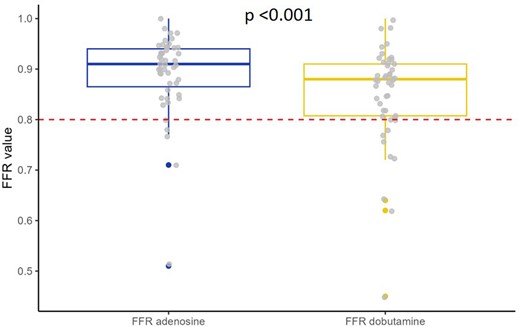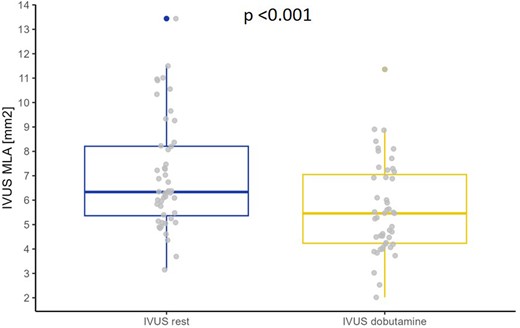-
PDF
- Split View
-
Views
-
Cite
Cite
A W Stark, M R Bigler, R Kakizaki, I Shiri, M Siepe, L Raeber, C Graeni, Association of non-invasive assessed anatomical features with functional testing in coronary artery anomalies - NARCO trial, European Heart Journal, Volume 45, Issue Supplement_1, October 2024, ehae666.2350, https://doi.org/10.1093/eurheartj/ehae666.2350
Close - Share Icon Share
Abstract
Anomalous aortic origin of a coronary artery (AAOCA) is a rare congenital condition believed to carry an increased risk for myocardial ischemia. However, correlation between anatomical characteristics and ischemia remains unclear. Therefore, this study aimed to assess: 1. The difference of invasive fractional flow reserve (FFR) and intravascular ultrasound (IVUS)-based minimal lumen area (MLA) between baseline and stress. 2. The association of coronary computed tomography angiography (CCTA)-based anatomical characteristics to invasively measured hemodynamics and IVUS in AAOCA.
Consecutive patients with AAOCA and presence of ≥1 anatomical high-risk features (i.e. intramural course (IM), slit-like ostium, acute take-off angle or proximal narrowing), were systematically evaluated as part of the NARCO trial using CCTA, FFR using adenosine (140 µg/kg/min), dobutamine-volume stress (20-40mcg/kg/min, 0.5-1mg atropine and 3L of saline solution) and IVUS- MLA of IM. Anatomic high-risk features were quantified by CCTA including ostial lumen area and IM-MLA, IM-width, IM-height, IM-elliptic ratio, take-off angle, proximal narrowing and IM length of the anomalous coronary segment.
A total of 94 patients with AAOCA were screened, whereas 48 showed high-risk anatomic features and underwent the complete stress protocol. Mean age was 54±12 years and 36 (75%) were male and 39 (81%) presented with symptoms. FFRstress was significantly lower than FFRadenosine (0.88 [0.81-0.91] vs. 0.91 [0.87-0.94], p<0.001) (Figure 1). FFRadenosine was ≤0.8 in 5 patients (10%), and FFRdobutamine was ≤0.8 in 12 patients (25%), resulting in 7 (15%) with FFRadenosine >0.8 while FFRdobutamine was ≤0.8. IVUS-MLA was decreased from 6.3 (5.4-8.2) mm2 to 5.4 (4.2-7.1) mm2 during stress (p<0.001) (Figure 2), while elliptic ratio increased from 2.6 (2.1-3.4) to 3.3 (2.5-4.4) (p<0.001). Logistic regression analysis for body surface area adjusted CCTA derived high-risk features showed, that only ostial lumen area, IM-MLA, -elliptic ratio and -width could predict FFRstress ≤0.8. Receiver operating curve analysis showed that ostial width had the greatest AUC with 0.86 (accuracy 83%, sensitivity 83%, and specificity 83%). Eight out of 12 (67%) patients with hemodynamic relevance underwent surgery, 2 (17%) underwent stenting and 2 (17%) were treated with medication.


Author notes
Funding Acknowledgements: Type of funding sources: Public grant(s) – National budget only. Main funding source(s): Swiss National Foundation (SNF)
- adenosine
- aorta
- dobutamine
- stents
- ischemia
- congenital anomaly of coronary artery
- myocardial ischemia
- hemodynamics
- atropine
- coronary artery
- fractional coronary flow reserve
- intravascular ultrasonography
- body surface area
- patient care management
- surgical procedures, operative
- stress
- surgery specialty
- revascularization
- ct angiography of coronary arteries
- saline solutions



